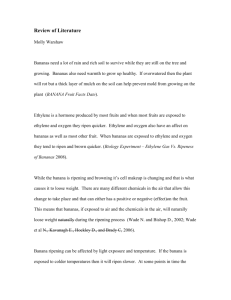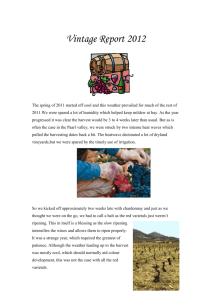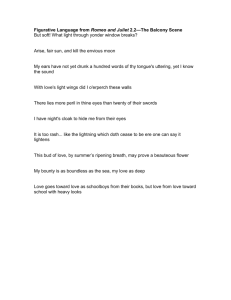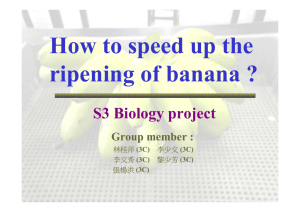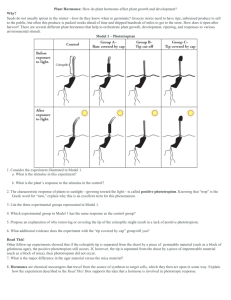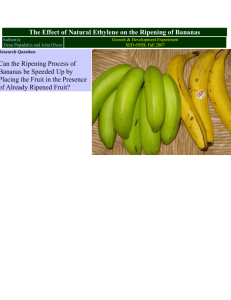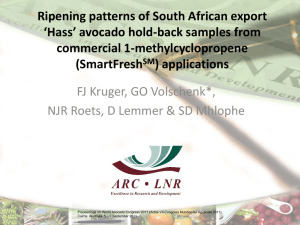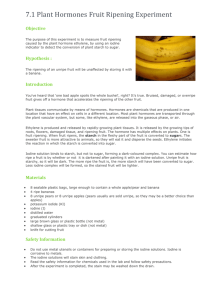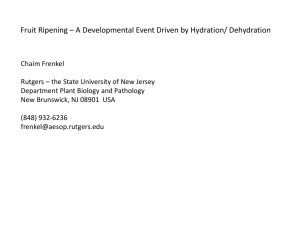Fruit Ripening Lab
advertisement
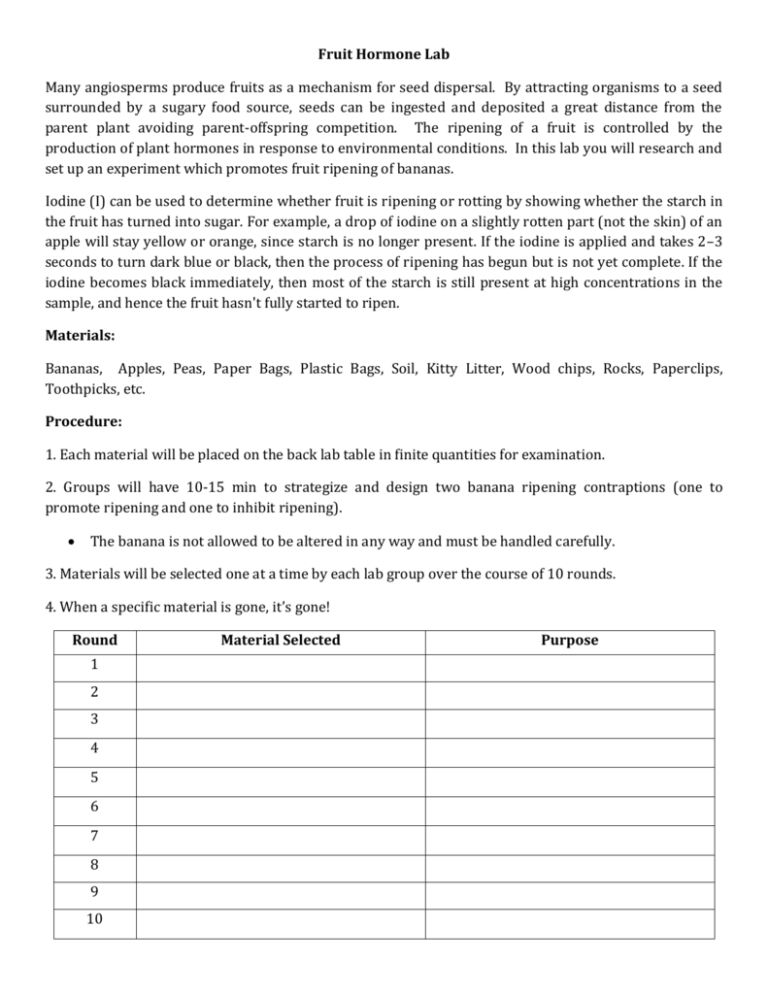
Fruit Hormone Lab Many angiosperms produce fruits as a mechanism for seed dispersal. By attracting organisms to a seed surrounded by a sugary food source, seeds can be ingested and deposited a great distance from the parent plant avoiding parent-offspring competition. The ripening of a fruit is controlled by the production of plant hormones in response to environmental conditions. In this lab you will research and set up an experiment which promotes fruit ripening of bananas. Iodine (I) can be used to determine whether fruit is ripening or rotting by showing whether the starch in the fruit has turned into sugar. For example, a drop of iodine on a slightly rotten part (not the skin) of an apple will stay yellow or orange, since starch is no longer present. If the iodine is applied and takes 2–3 seconds to turn dark blue or black, then the process of ripening has begun but is not yet complete. If the iodine becomes black immediately, then most of the starch is still present at high concentrations in the sample, and hence the fruit hasn't fully started to ripen. Materials: Bananas, Apples, Peas, Paper Bags, Plastic Bags, Soil, Kitty Litter, Wood chips, Rocks, Paperclips, Toothpicks, etc. Procedure: 1. Each material will be placed on the back lab table in finite quantities for examination. 2. Groups will have 10-15 min to strategize and design two banana ripening contraptions (one to promote ripening and one to inhibit ripening). The banana is not allowed to be altered in any way and must be handled carefully. 3. Materials will be selected one at a time by each lab group over the course of 10 rounds. 4. When a specific material is gone, it’s gone! Round 1 2 3 4 5 6 7 8 9 10 Material Selected Purpose 5. After the 10th selection round, students will build their fruit ripening contraptions. Experimental designs with rationales: 6. The contraptions will be set out over the weekend and bananas will be examined on Monday. Data: Using the background information, create a data table to quantify the ripeness of each banana. Questions: 1. Which group ripened the banana the most? How did their design differ from your design? 2. Which group was able to inhibit the ripening of the banana the most? How did their design differ from your design? 3. Explain the role of plant hormones in process of fruit ripening.

